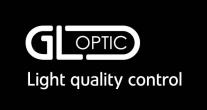Den Interaktiven Geländeplan 2026 finden Sie hier.
GL Optic

GL Optic
Tobelwasenweg 24
73235 Weilheim an der Teck
Deutschland
Telefon+49 7023 950430
Fax+49 7023 950452
Jetzt unverbindlich anmelden und bei der Light + Building 2026 ausstellen.
Den Interaktiven Geländeplan 2026 finden Sie hier.

GL Optic
Tobelwasenweg 24
73235 Weilheim an der Teck
Deutschland
Telefon+49 7023 950430
Fax+49 7023 950452